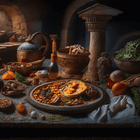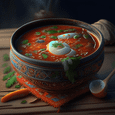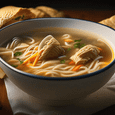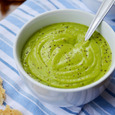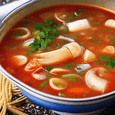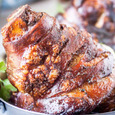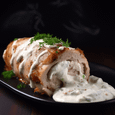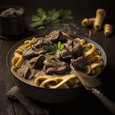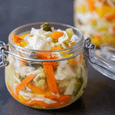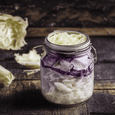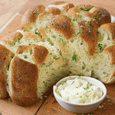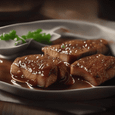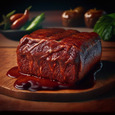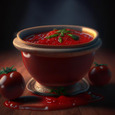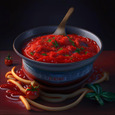Ancient Roman cuisine is a fascinating amalgamation of flavors and cooking techniques that have stood the test of time. From garum-laced dishes to decadent honeyed desserts, the Romans certainly knew how to indulge their taste buds. In this article, we will delve into the rich culinary traditions of Ancient Rome and explore the intriguing ingredients and cooking methods that shaped their gastronomy.
A Glimpse into Ancient Roman Gastronomy
The Romans were known for their extravagant feasts and their love for food. Meals were not merely a source of sustenance but an opportunity to showcase wealth, power, and hospitality. Traditional Roman banquets, known as "convivia," were elaborate affairs comprising multiple courses and a wide variety of flavors.
Key Ingredients in Ancient Roman Cooking
Garum: This fermented fish sauce was an essential ingredient in nearly every Roman dish. Made from salted fish guts, garum added a distinct umami flavor to the food, akin to modern-day fish sauce used in Asian cuisines.
Spices and Herbs: Romans heavily relied on aromatic spices and herbs to enhance the taste of their dishes. Some popular choices included black pepper, cumin, coriander, fennel, bay leaf, and lovage.
Wine: Wine played a crucial role in Roman cooking, often used as a base for sauces and marinades. They had an extensive array of wine varieties, and each had its own culinary application.
Olives and Olive Oil: Olive oil was a central ingredient in Roman cooking, used for frying, sautéing, and dressing. Olives, both black and green, were enjoyed as a snack or transformed into oil and sauces.
Uncovering Roman Culinary Techniques
The Romans were pioneers in the culinary world, introducing new techniques that are still prevalent today. Here are a few notable cooking methods they mastered:
Baking: Romans were adept at baking bread and savory dishes in wood-fired ovens. Their expertise in bread-making led to various types of bread, including the precursor to modern pizza, known as "picea."
Boiling: Boiling was a common method used to cook soups, stews, and vegetables. Romans loved their vegetables and often flavored them with herbs, wine, and rich sauces.
Frying: Frying was popular in Roman cuisine, both in olive oil and lard. They would fry a myriad of dishes, from meatballs to seafood, to achieve a crispy exterior while maintaining the tenderness inside.
Pickling: Pickling was a preservation technique employed by the Romans to extend the shelf life of various ingredients. From cucumbers to fish, they pickled a wide range of foods to be enjoyed throughout the year.
Roman Delicacies You Must Try
Patina: A savory Roman dish consisting of a mixture of meat, bread, and various herbs, all blended together and baked to perfection. It was often served as an appetizer.
Sow's Womb: A unique delicacy made with the womb of a pregnant sow, stuffed with a mixture of ground meat, eggs, and spices. This unusual delicacy was reserved for the most special occasions.
Apicius: Named after the renowned Roman gourmet, "Apicius" referred to a collection of ancient Roman recipes that showcased the diverse culinary traditions of the time. Dishes like "Isicia Omentata" (minced meatballs) and "Pullum Parthicum" (chicken cooked with dates and spices) were popular favorites.
Rediscovering Roman Cuisine Today
While exact recreations of Ancient Roman recipes may be a challenge, there has been a resurgence of interest in Roman cuisine. Chefs and food enthusiasts around the world have started experimenting with traditional Roman techniques and ingredients, incorporating them into contemporary dishes. They aim to honor this ancient gastronomic legacy while giving it a modern twist.
Conclusion
Exploring Ancient Roman cuisine offers us a unique glimpse into the culinary customs and flavors of a bygone era. From luxurious banquets to bizarre delicacies, Roman food reflects the intricacies of their culture and their passion for indulgence. By unearthing the secrets of this ancient cuisine and adapting them to the present-day, we can keep the spirit of Roman gastronomy alive. So, next time you prepare a meal, why not sprinkle a bit of the ancient Roman flavors and techniques into your dishes? You might be surprised by the delightful results!
